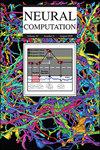增强脑电图预测:一种概率深度学习方法。
IF 2.1
4区 计算机科学
Q3 COMPUTER SCIENCE, ARTIFICIAL INTELLIGENCE
引用次数: 0
摘要
预测脑电图(EEG)信号,即根据过去的时间序列估计未来的值,在许多基于脑电图的实时应用中是必不可少的,如脑机接口和闭环脑刺激。随着这些应用变得越来越普遍,一个好的预测模型的重要性增加了。在此之前,自回归模型(AR)已被用于该任务;然而,随着预测步骤的增多,其预测精度会迅速下降。我们的目标是通过应用概率深度学习来进行稳健的长期预测来改进这一点。为此,我们应用概率深度神经网络模型WaveNet来预测θ - (4-7.5 Hz)和α -频率(8-13 Hz)频段的静息状态脑电图,并将其与AR模型进行比较。WaveNet在θ和α频率下都能可靠地提前150 ms预测脑电图信号,平均绝对误差为1.0 $\pm$ 1.1 $\mu$V (θ)和0.9 $\pm$ 1.1 $\mu$V (α),并且在估计信号幅度和相位方面优于AR模型。此外,我们发现概率方法提供了一种更准确的预测方法,同时有效地丢弃了不确定的预测。我们首次证明了概率深度学习可以用于预测静息状态脑电图时间序列。在未来,所开发的模型可以增强对脑机接口和脑刺激协议中大脑状态的实时估计。它也可能用于回答神经科学问题和诊断目的。本文章由计算机程序翻译,如有差异,请以英文原文为准。
Enhanced EEG Forecasting: A Probabilistic Deep Learning Approach
Forecasting electroencephalography (EEG) signals, that is, estimating future values of the time series based on the past ones, is essential in many real-time EEG-based applications, such as brain–computer interfaces and closed-loop brain stimulation. As these applications are becoming more and more common, the importance of a good prediction model has increased. Previously, the autoregressive model (AR) has been employed for this task; however, its prediction accuracy tends to fade quickly as multiple steps are predicted. We aim to improve on this by applying probabilistic deep learning to make robust longer-range forecasts. For this, we applied the probabilistic deep neural network model WaveNet to forecast resting-state EEG in theta- (4–7.5 Hz) and alpha-frequency (8–13 Hz) bands and compared it to the AR model. WaveNet reliably predicted EEG signals in both theta and alpha frequencies 150 ms ahead, with mean absolute errors of 1.0 ± 1.1 µV (theta) and 0.9 ± 1.1 µV (alpha), and outperformed the AR model in estimating the signal amplitude and phase. Furthermore, we found that the probabilistic approach offers a way of forecasting even more accurately while effectively discarding uncertain predictions. We demonstrate for the first time that probabilistic deep learning can be used to forecast resting-state EEG time series. In the future, the developed model can enhance the real-time estimation of brain states in brain–computer interfaces and brain stimulation protocols. It may also be useful for answering neuroscientific questions and for diagnostic purposes.
求助全文
通过发布文献求助,成功后即可免费获取论文全文。
去求助
来源期刊

Neural Computation
工程技术-计算机:人工智能
CiteScore
6.30
自引率
3.40%
发文量
83
审稿时长
3.0 months
期刊介绍:
Neural Computation is uniquely positioned at the crossroads between neuroscience and TMCS and welcomes the submission of original papers from all areas of TMCS, including: Advanced experimental design; Analysis of chemical sensor data; Connectomic reconstructions; Analysis of multielectrode and optical recordings; Genetic data for cell identity; Analysis of behavioral data; Multiscale models; Analysis of molecular mechanisms; Neuroinformatics; Analysis of brain imaging data; Neuromorphic engineering; Principles of neural coding, computation, circuit dynamics, and plasticity; Theories of brain function.
 求助内容:
求助内容: 应助结果提醒方式:
应助结果提醒方式:


